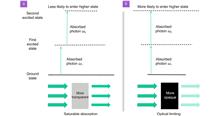 View fulltext
View fulltext
Nonlinear optics is an important research direction with various applications in laser manufacturing, fabrication of nanostructure, sensor design, optoelectronics, biophotonics, quantum optics, etc. Nonlinear optical materials are the fundamental building blocks, which are critical for broad fields ranging from scientific research, industrial production, to military. Nanoparticles demonstrate great potential due to their flexibility to be engineered and their enhanced nonlinear optical properties superior to their bulk counterparts. Synthesis of nanoparticles by laser ablation proves to be a green, efficient, and universal physical approach, versatile for fast one-step synthesis and potential mass production. In this review, the development and latest progress of nonlinear optical nanoparticles synthesized by laser ablation are summarized, which demonstrates its capability for enhanced performance and multiple functions. The theory of optical nonlinear absorption, experimental process of laser ablation, applications, and outlooks are covered. Potential for nanoparticle systems is yet to be fully discovered, which offers opportunities to make various types of next-generation functional devices.
Antichiral gyromagnetic photonic crystal (GPC) in a honeycomb lattice with the two interpenetrating triangular sublattices A and B magnetically biased in opposite directions can realize antichiral one-way edge states propagating along the same direction at its two parallel edges. Here, we report the construction and observation of topological beam splitting with the easily adjustable right-to-left ratio in an antichiral GPC. The splitter is compact and configurable, has high transmission efficiency, and allows for multi-channel utilization, crosstalk-proof, and robust against defects and obstacles. This magnificent performance is attributed to the peculiar property that antichiral one-way edge states exist only at zigzag edge but not at armchair edge of antichiral GPC. When we combine two rectangular antichiral GPCs holding left- and right-propagating antichiral one-way edge states respectively, bidirectionally radiating one-way edge states at two parallel zigzag edges can be achieved. Our observations can enrich the understanding of fundamental physics and expand topological photonic applications.










